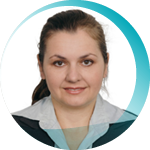
Migraine Treatment - An Overview
Getting a migraine is very common. In fact, one in five people will experience one at some point in their life.
The condition is disabling in many ways, and can lead to loss of productivity, increased hospital admissions and decreased quality of life. Unfortunately, there are no cures for migraine but there are effective treatments that are aimed at decreasing their severity and frequency.
Notably, migraines are three times more common in women due to hormonal factors. A headache diary can be very useful in detecting menstrual-related migraines.
Treatment
Migraine treatment is divided into acute and preventative therapy.
Acute therapy
Acute treatment aims to abort or reduce the severity of a migraine when it starts. First-line treatments include paracetamol, non-steroidal anti-inflammatory drugs (NSAIDs) such as ibuprofen, aspirin, naproxen (commonly used for period pain) and a migraine specific class of drugs called triptans of which there are five available in Australia (Sumatriptan, Rizitriptan, Eletriptan, Zolmitriptan, Naratriptan).
The NSAIDs are often used in higher doses than what the packet recommends e.g. aspirin 900mg, ibuprofen 600mg at the onset of a headache. If one suffers from nausea with a migraine, then treating this can significantly help and there is evidence that antiemetics work synergistically with migraine medications.
Medication-overuse headaches are a condition specific to migraines and tension-type headaches, which is often under-recognised. It occurs when someone takes too much acute pain medication (10 or more days per month or two days per week).
Headaches can become more frequent and less responsive to preventative therapy. Medication overuse headache occurs with any class of medication, even paracetamol so being mindful of this condition and reducing acute pain medication use is key.
If someone is using acute pain medication for more than 10 days per month then this should prompt a review or commencement of preventative medication. These medications are taken daily to reduce the frequency, severity and duration of migraines. There are no clear guidelines on when to start these but my rule of thumb is that if a person has at least one debilitating migraine per week then this warrants preventative treatment.
Preventative therapy
There are at least 10 medications that are commonly used and selection depends on a person’s other medical conditions: tolerability, child-bearing status and allergies. These medications were not initially designed as migraine treatment but were incidentally found to reduce migraine severity. They mostly fall into one of the following categories: anti-depressant, anti-epileptic and blood pressure treatment.
Another common pitfall is that these medications are often not trialled for long enough or at high enough doses before deeming treatment failure. Preventatives should be trialled for a minimum of eight to 12 weeks at a dose that was deemed to be effective in the trials or otherwise at maximum tolerated dose.
Some may even need a combination of medications. Not every medication will work for an individual and hence it can take time to find an effective medication.
If a person has tried and failed at least three preventatives then they may be eligible for Botox treatment. The caveat is that a person must have chronic migraines (defined as 15 or more migraine days per month) in order to access this on the PBS.
There is a set protocol of 31 injections which are given every three months and a person needs to demonstrate at least a 50 per cent reduction in frequency at six months to continue accessing this through the PBS. Again, this treatment does not work for everyone.
Anti-CGRP monoclonal antibodies are the new kid on the block and have caused a lot of excitement as they are the first migraine-specific preventative drug. Recently, Ajovy (fremanezumab) and Emgality (galcanezumab) have been PBS listed for chronic migraine sufferers and the PBS criteria is very similar to Botox. They are highly efficacious in a subgroup of patients and well-tolerated. They are also faster onset with effects usually seen within one to four weeks.
There are also neurostimulation devices such as Cefaly, vagal nerve stimulation and transcranial magnetic stimulation. The latter two of which have limited evidence and are not commonly used. These are usually reserved for those who don’t want or can’t tolerate medications.
So there you have it. A brief rundown of migraine management.

Dr Camilla Jozwik
BMedSc (Hons), MBBS, FRACP
Adult Neurologist
ACT Neurology Centre & Calvary Bruce Public Hospital
Camilla is an Australian trained neurologist who is based in Canberra and has an interest in migraine and headache treatment. She is a member of the Australia New Zealand Headache Society (ANZHS) and offers Botox to her patients at the ACT Neurology Centre.
